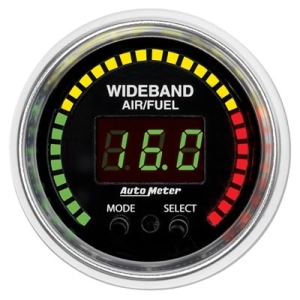Tuning
If you think you can tune accurately by the seat of your pants and/or by reading spark plugs you're kidding yourself. The only way to do it is to accurately measure the performance, whether it's by dyno, drag strip speeds or one of the in-car devices.
Many years ago I had a car that ran well, actually I thought it was pretty close to being tuned spot on, using only plug readings and the seat of my pants. I bought one of those in-car timers that measures 0-30mph, 0-60mph, 1/4 mile ET and terminal speed. It sat on the bench for months but eventually I got around to fitting it. I took the car (and my jet collection) out one afternoon and was amazed by the usefulness of this little tool. Within half an hour I'd picked up nearly half a second and a few mile an hour. A couple of hours later the total gain was almost a full second. The surprising thing was that sometimes I would make a change that made the car feel slower when it actually went quicker, and sometimes it was vice-versa. Since then I've considered these inexpensive devices to be one of the best investments that can be made in improving performance. The thing I like about them is they can be used anytime you like, providing you have access to a suitable stretch of road.
 |
| Typical in-car accelerometer. Can show 0-60, ET, terminal speed, horsepower etc. |
Another useful tool is an air/fuel ratio gauge coupled to a wideband O2 sensor. These can help you get the jetting or fuel map in the ballpark pretty quickly, although the final setting should still be done by measuring the cars actual performance.
 |
| Typical Air/Fuel ratio guage |
Probably the best approach is to get the jetting in the ballpark, then spend some time on ignition timing. Repeat the process to fine tune - you might have do it a couple of times. When you get it right you'll probably find that there is a range of a couple of jet sizes and a couple of degrees of advance where the performance barely changes. It's safest to be on the richer, less-advanced end of this range. If you're running a solid lifter cam you might also want to experiment with minor changes in valve clearances, and if you find significant gains from this it might indicate that a change in cam timing or a whole new cam would be beneficial. When you're tuning at the drag strip or with an in car timer concentrate mainly on the terminal speeds as these are an accurate indication of the engines output, whereas the ET is subject to variations in driving technique and how well you hook up off the line. You will find the terminal speeds surprisingly consistant, even if you stuff up the launch or gear changes etc. Not that I'd ever do that...
Earlier I mentioned that power output and fuel consumption are the two key indicators of engine efficiency. There are another couple of more subtle indicators you might want to keep an eye on too, and they are the jetting and timing requirements. Basically if the engine seems to want unusually rich jetting it's a sign of poor mixture quality and/or distribution, or perhaps overcarburation. Get that fixed and you'll find the engine will make more power and will want a smaller jet. Similarly, if the engine wants great gobs of spark advance at either end of the rev range then something isn't quite right, possibly not enough squish or a mismatch of compression ratio to cam timing. There is a difference though, between an efficient engine that makes peak power with moderate spark advance and one that can only tolerate so much advance before it rattles like a paint tin full of marbles..